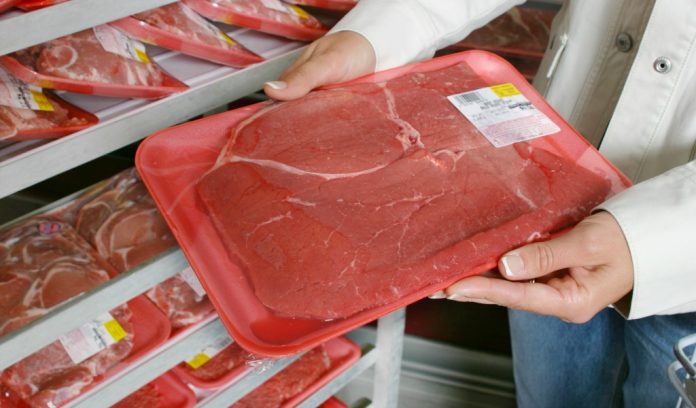If you’ve ever butchered anything from a rabbit to a hog — and butchered is the right word, not the bleached “harvested” — you know there will be blood. Butchering, after all, is a bloody business.
While 95% of Americans are carnivores, it’s a safe bet that nearly 99.9% of them haven’t thought much about where their meat comes from or how it gets to them so … well, clean.
Employee deaths
Covid-19 changed that willful blindness and put America’s industrialized and exploitive meat delivery system on the front page of every newspaper because it wasn’t just killing hogs, cattle and poultry. It was — is — also killing the people doing most of the butchering.
As of May 26, according to in-depth reporting by Leah Douglas of the Food & Environment Reporting Network, or FERN, 73 U.S. “food processing” workers have died since the beginning of the coronavirus outbreak in America. Sixty-seven of them, or nine out of 10, were meatpacker employees.
In the broader picture, reports Douglas, of the 19,785 food processing workers that tested positive for the virus, 17,893 of them, again, nine out of 10, worked in animal disassembly — or meatpacking — factories.
Meat industry titans know they have a terrible problem. Most are now spending mega-millions on worker facemasks and shields, workplace dividers, personal health monitoring and other long-overdue measures to protect the health and safety of its shoulder-to-shoulder workforce.
All the money, monitoring, and motivation, however, will never overcome the weakest link in today’s meatpacking chain: its success rises and falls on a river of quickly trainable, overwhelmingly immigrant labor who are low-wage cogs in an international protein machine oiled mostly with blood.
No accident
And little of this is by accident. Since the early 1980s, meatpackers have used two powerful tools, industrial innovation and the lack of government oversight — and, more often than not, government complicity — to regain the dominating market power they enjoyed a century ago.
In fact, “Exactly 100 years ago,” noted Politico, May 25 “… the five biggest U.S. meatpackers … were responsible for 82% of the beef market.” After years of litigation — and decades of new “competition” because of government intervention — “the top four firms controlled only 36% of cattle slaughter … by 1980.”
Then came the near-complete abandonment of corporate ag antitrust action by the Reagan, Bush I, Clinton, Bush II, Obama and Trump administrations. When it comes to antitrust, White Houses aren’t white, red or blue; they’re green — as in green lights.
No surprise then that now the top four beef packers again “… control about 85% of the U.S. (beef) market,” noted Politico. The market concentration is similar for poultry and pork slaughterers.
Equally impressive is the industry’s political power. For almost 30 years, the federal government has conceded to meatpackers’ calls for cheaper, in-house inspection regimes, the speeding up of kill lines to increase throughput, and cuts in the number of federal meat inspectors.
That power was on full display when the White House empowered Secretary of Agriculture Sonny Perdue, through the Defense Production Act, to get at-risk meatpacker workers back on the job, pandemic or not, a month ago. Today, U.S. meat plants are running at 91% capacity.
And for what?
Local farmers hurting. Definitely not for the benefit of independent hog farmers, cattle ranchers or feedlot finishers. In May, livestock industry groups forecast pandemic-fueled, 2020 hog losses at $5 billion and cattle losses at $13.5 billion.
And that’s only if a second round of Covid-19 — a likely possibility, warn experts — doesn’t slam livestock growers this winter.
Whatever happens in the market, Congress needs to reexamine meatpacker concentration after allocating some of the $3 trillion of government Covid cash to build express lanes for smaller, local, independent meatpackers to form and grow.
Congress did it for ethanol and corn farmers, and it can do it for livestock and poultry farmers. Call it what it is: job creation, rural development, smart use of taxpayer money.
Let’s just stop calling it harvesting because, in fact, it’s a very bloody business.














